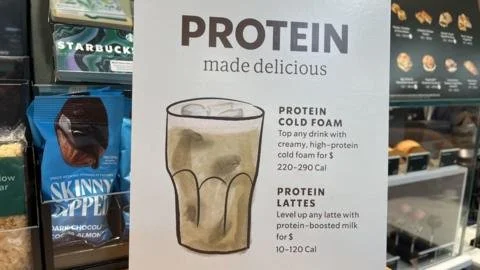Unlocking the Protein Power: Why Food Companies are Racing to Meet Consumer Demand
Are you caught in the pulse of the high-protein craze? Meet Andie, a Vancouver resident who, after using a fitness app, adjusted her diet to incorporate more protein without upping her calorie intake. She finds joy in high-protein lattes from a Canadian chain, which caters to the increasing consumer demand for protein-rich products.
Across the U.S., a 4.8% growth in high-protein product sales from March 2024 to March 2025 signals that consumers are more invested than ever in what they eat. The return of milk consumption—having not seen an increase since 2009—transformatively aligns with this protein push, partly thanks to an appreciation for products derived from cows versus plant-based alternatives. The global market for milk towers at an impressive $69.3 billion, dwarfed by the $8.4 billion for milk substitutes.
Though dairy is thriving, those looking for plant-based options face a decline, with almond milk losing traction. As consumers now search for whole milk more than plant-derived options like oat milk, companies are scrambling to enhance their products with higher protein contents.
Amid the protein rush, nutritionists express concern. They argue that most affluent individuals already consume sufficient protein, emphasizing that excess intake—especially from non-plant sources—can be linked to various health risks, and costs could wane consumer focus on essential nutrients like fiber.
Innovative businesses like Verley, a French startup, are responding to this high-protein demand by producing animal-free protein through fermentation, targeting the environmentally conscious consumer by promising sustainable and efficient production. Their venture aside, social media’s influential reach sways public perception, often overshadowing nutritional basics as many aim to emulate the lifestyle of athletes.
As the protein trend expands, it raises questions about whether these marketing strategies truly benefit the average consumer or simply cater to a fleeting financial opportunity in the food sector. Is it truly a dietary revolution, or just a clever marketing phenomenon?

